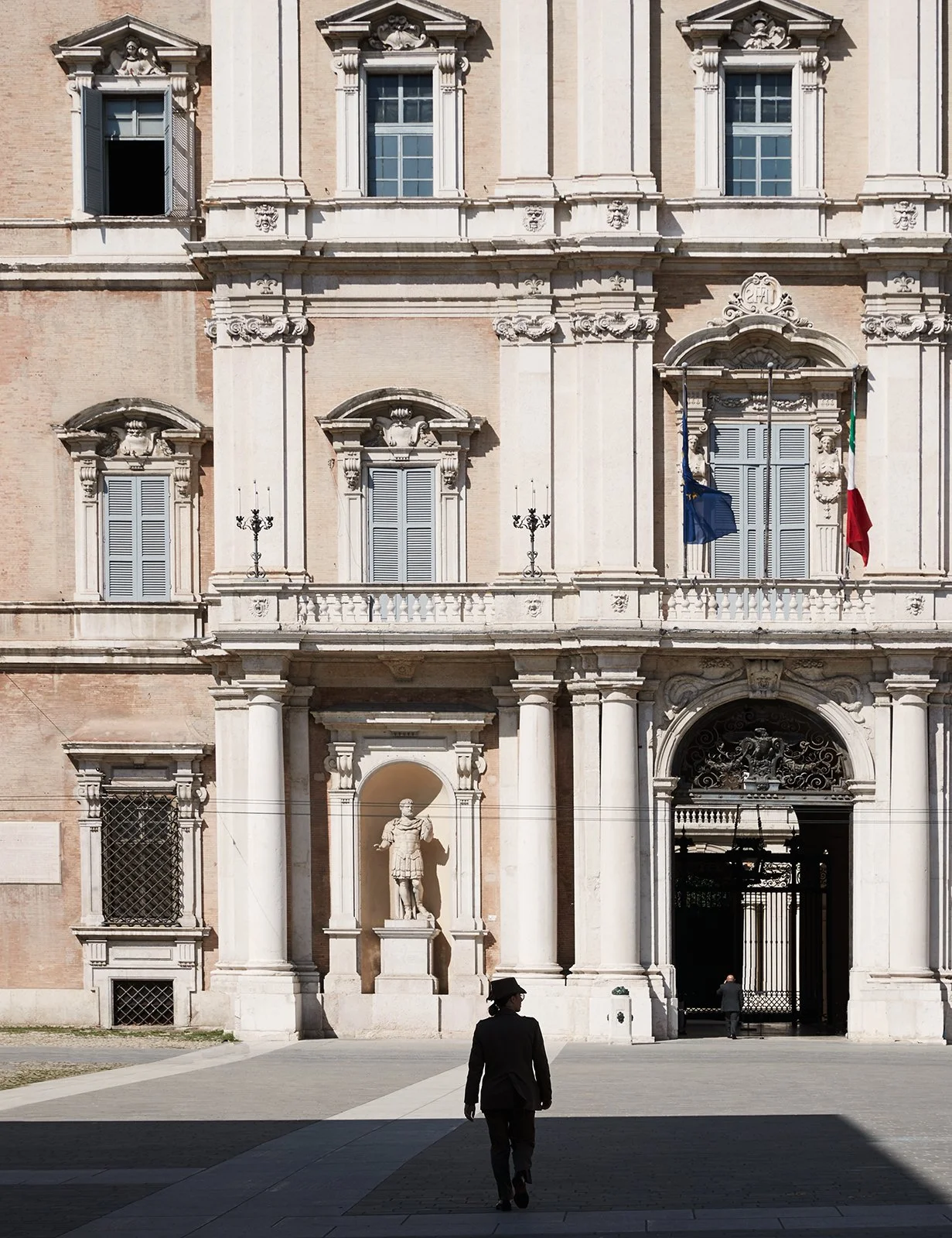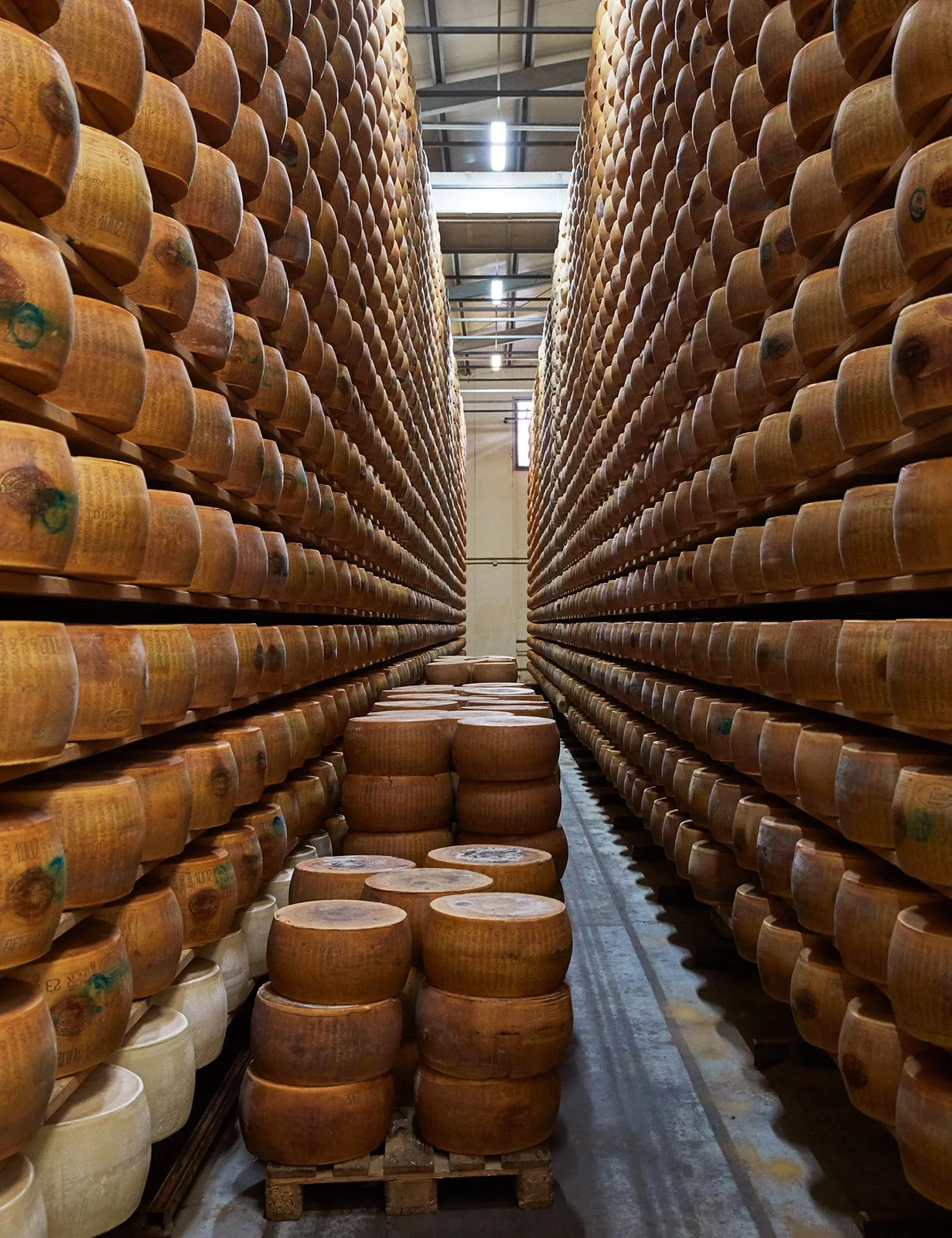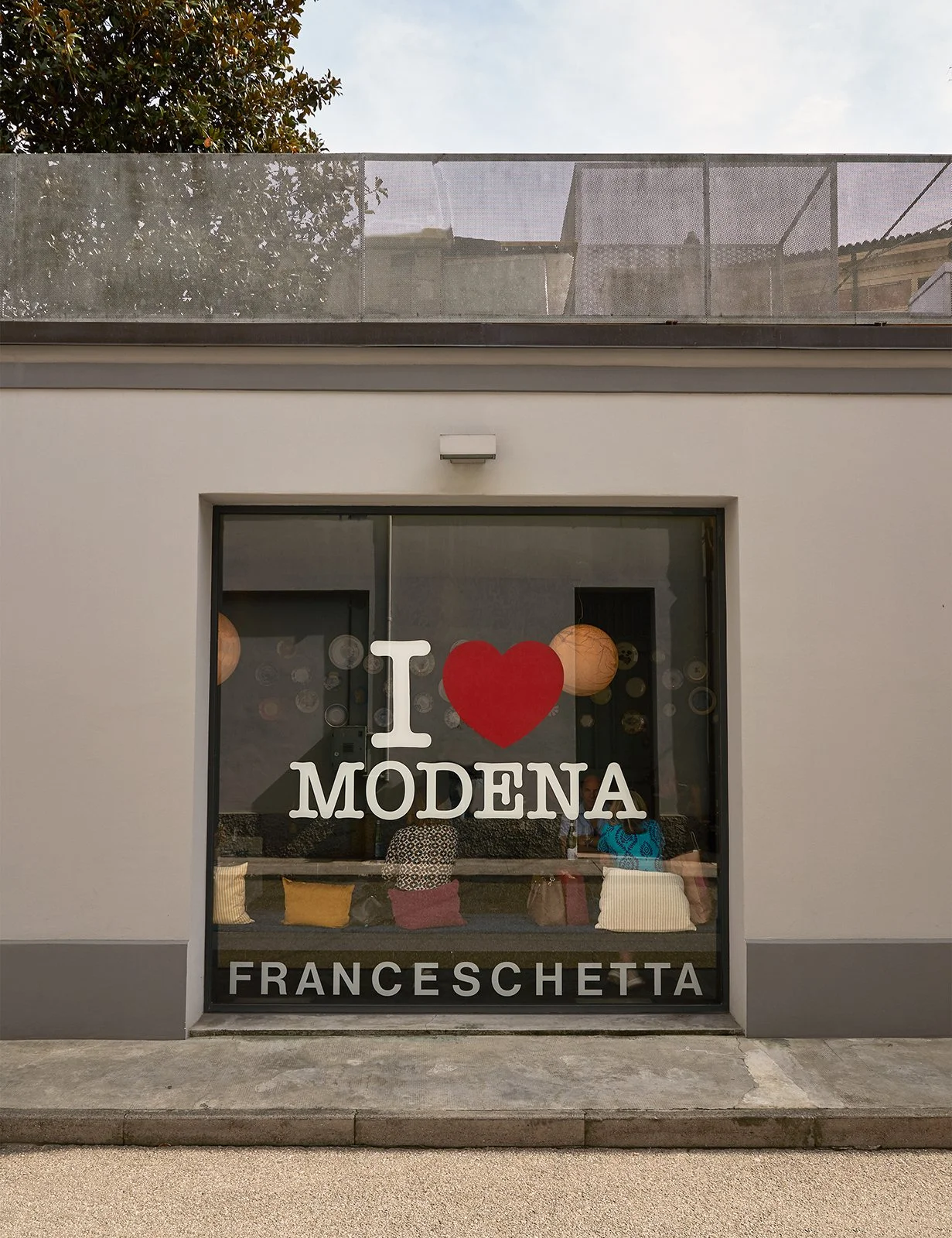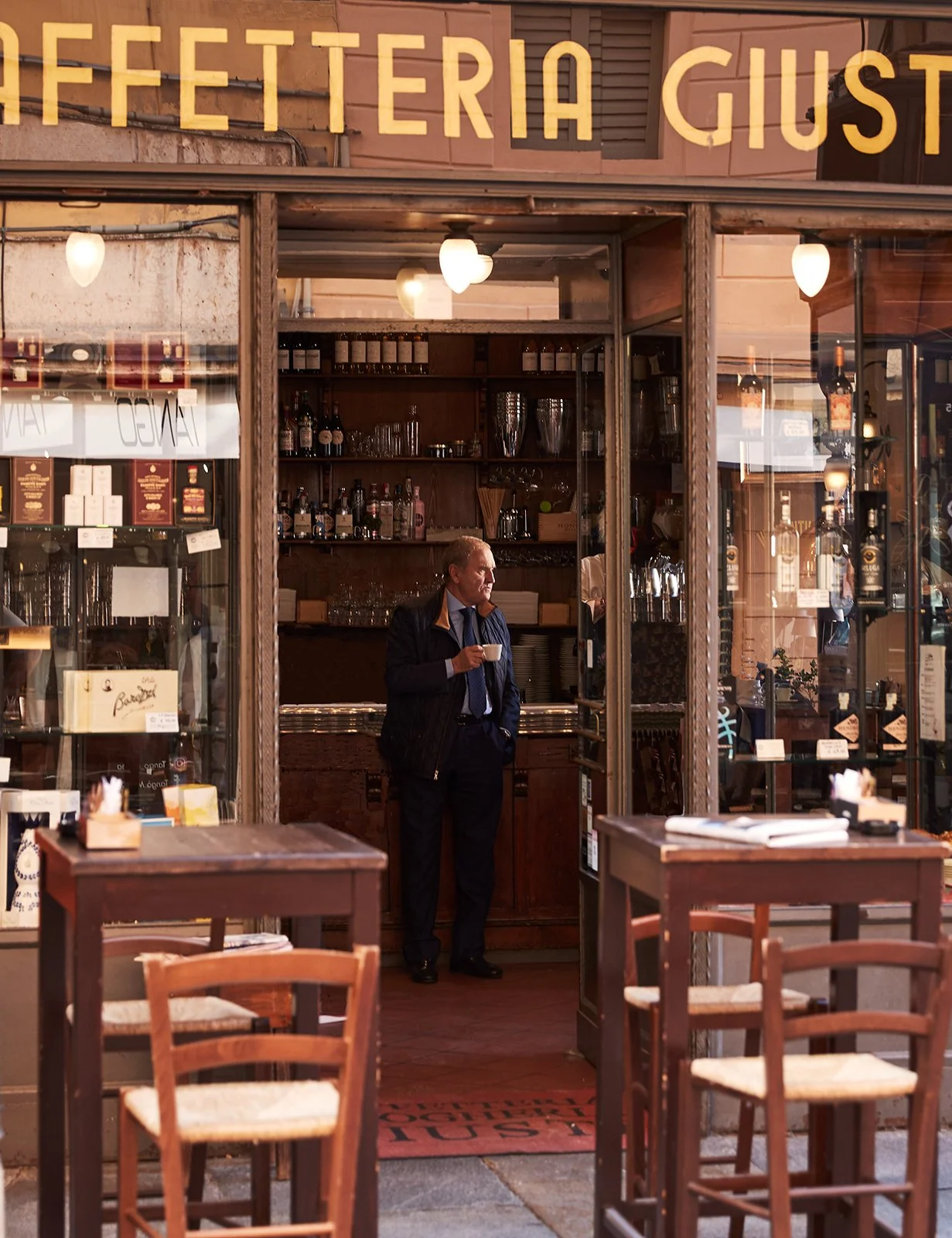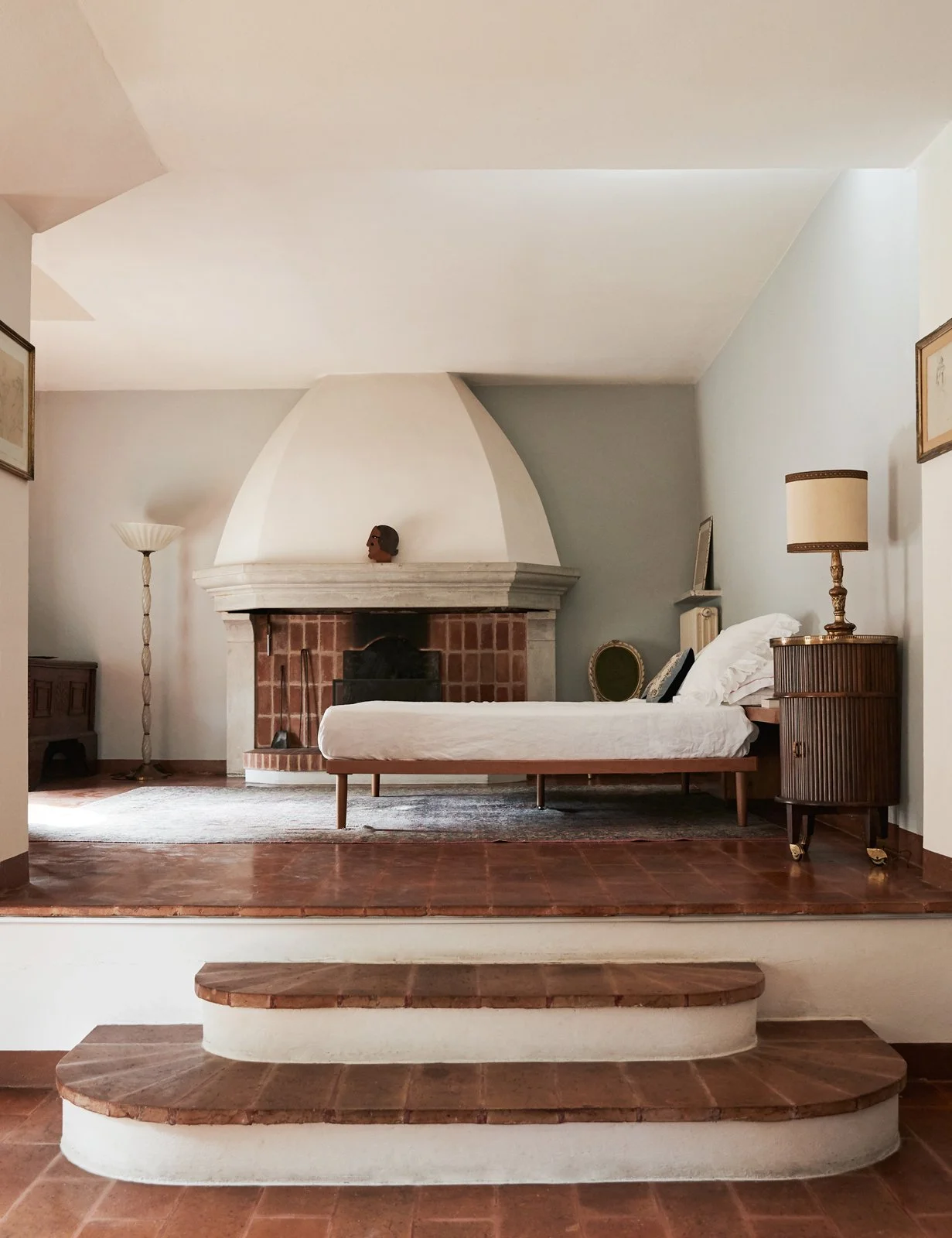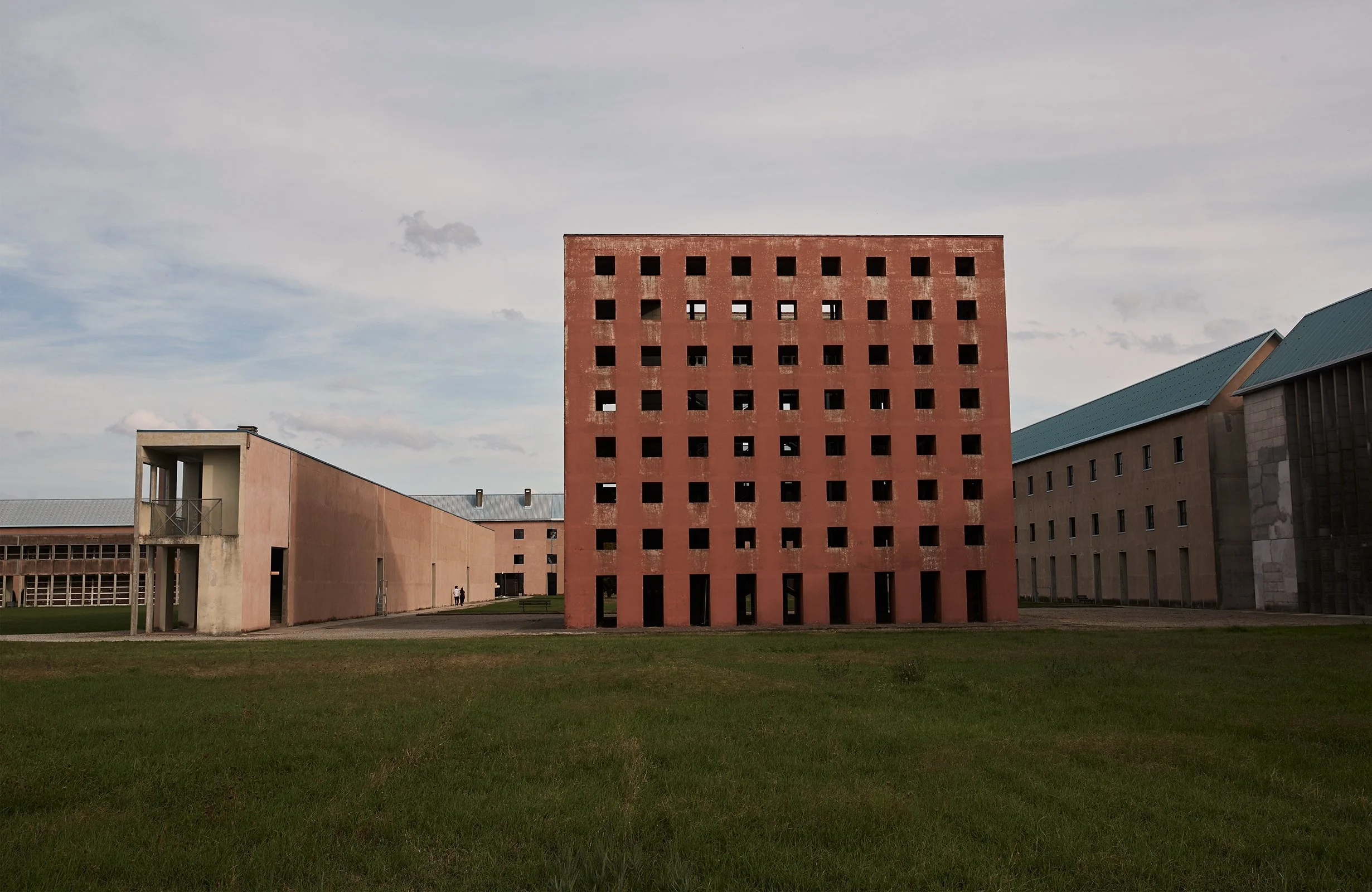Slow Food & Fast Cars
During the Grand Tour in the 17th century, young men from the upper echelons of society travelled through Italy as an educational rite of passage. It centred on classical culture, and the shared knowledge became an invisible link connecting people who had undertaken it. Traditionally, it included stops in Florence, Venice, Rome, and Naples.
A town like Modena was certainly not included, as it was considered lacking in historical significance. Perhaps that’s exactly why today, when tourists are complaining about saturation and peak mass tourism in Venice, Rome, and Florence, that Modena is such a great place to visit.
Situated on the south side of the Po Valley, Modena is perhaps most famous for its strong link to the car industry. In its outskirts are three car museums. The most famous is the least interesting: the Enzo Ferrari Museum is housed in a sleek building where everything is overpriced, and the exhibition takes about ten minutes to walk through. Men lean over the old sports cars, taking photos and filming the cars from every angle, while patient wives either wait outside or stand alongside their husbands, mentally far away.
A better option for a car enthusiast is the Museo Stanguellini. In a former Fiat dealership (and once the Vittorio Stanguellini workshop), a private collection of cars is beautifully displayed. In 1879, the Stanguellini business was first founded, soon converted into a car construction outfit.
The exhibition traces the company’s first years of building Stanguellini models, continuing with the “Modena 1”: a 1908 Fiat Tipo 1 (with registration number MO/1). You don’t really have to have a passion for cars to appreciate this museum, as it’s equally a celebration of design and craftsmanship. Remember to book your visit in advance, it’s by appointment only.
A third option is more unique. Outside of Modena you’ll find Hombre, an organic Parmigiano Reggiano farm. In the shop, you can buy great unlabelled bottles of the local Lambrusco wine, as well as differently aged Parmigiano Reggiano, sold by a charming woman who doesn’t care if your Italian is bordering on the non-existent, she’ll engage you in conversation nonetheless.
If you continue past the shop, soon you’ll see a row of tractors, one being a Maserati. Just behind them is a large building that contains a spectacular car collection, focused primarily on Maserati cars from different decades, collected by the farm’s former owner Umberto Panini.
Panini’s fortune was made through the company he founded with his brothers, selling stickers, magazines, and calendars (before moving on to making organic cheese and collecting cars, obviously).
The website will tell you that it’s open only if you contact them in advance, but this probably won’t work as they have a laissez-faire attitude to customer service. Better to simply show up and try your luck or book a guided tour of the cheese factory and hope they also include a trip to the car museum (they usually do).
If you’re in the mood to learn more about cheese, the Caseificio Bio Reggiani organizes both guided tours and cheese tastings at their organic farm. Visiting these places is like connecting the dots in how conceptual fashion was created in the 1980s: many designers grew up in smaller towns close to the countryside. Using inspiration from what they had seen there, they translated workwear and typical countryside aesthetics into the height of fashion.
Going on a guided tour and seeing people in their workwear is eerily similar to attending an early Martin Margiela fashion show. The same is true of the design of the wine bottles; bars in the Marais would kill to get their hands on bottles that look this great, but here, in the countryside outside of Modena, it’s just how things naturally look. Accidentally bobo lifestyle, we said to each other whenever we happened to see an example of it.
If cars are one of Modena’s claims to fame, food is the other. Massimo Bottura’s three-Michelin-starred Osteria Francescana has been named “the world’s best restaurant” and foodies will make the pilgrimage to Modena solely to have the experience of dining here, if only once in a lifetime.
Having worked at Alain Ducasse’s Le Louis XV in Monaco, the Osteria Francescana juxtaposes Italian tradition with French sensibilities in a very avant-garde way, its twelve tables being surrounded by a stunning collection of contemporary art. Not everyone thinks that it’s justified spending exorbitant amounts on a simple meal, and for them, Bottura opened Franceschetta58, a much more modest and relaxed dining experience, with a considerably lighter price tag.
If you want an even more immersive experience, check into Casa Maria Luigia, Bottura’s country house-styled hotel and restaurant, where you can eat his meals three times a day and sleep in one of the twelve rooms, all decorated with Gucci furniture and prints.
There are of course other places to eat in Modena. For a touch of mid-century modern design, try Oreste (open for dinner only). Salumeria Hosteria Giusti is one of the most beautiful food shops in town, and right next to it is the very traditional Caffetteria Drogheria Giusti, where the locals prefer to get their morning coffee.
Except for the sumptuous Casa Maria Luigia there are few good hotels in Modena, which is a common challenge in cities where you can escape overcrowding. We prefer to stay slightly outside, at Il Borgo del Balsamico, which technically is not in Modena at all but in Albinea, a small town 45 minutes west of the city.
This charming B&B combines hosting with the production of balsamic vinegar, which is one of Modena’s greatest pleasures (and served with everything, from salads to ice-cream). We especially enjoy the large garden (that includes a swimming pool) where you can lounge around and do nothing.
Usually, a weekend trip doesn’t include a visit to the local cemetery, but the San Cataldo is worth seeing. Built in 1972 by Italian architect and theorist Aldo Rossi but never completed, it was designed as a “real city of the dead”. The last works date back to 2011, but as of now only about 40 percent of the project has been completed. The innovation is in the internal parts, inspired by the Emilian cities, including the porticoes of Bologna. It’s a mix of elementary geometric shapes. The orange cube stands on rows of concrete stilts, and in the centre, there’s an open courtyard with a tight grid of empty burial niches. Rossi defined it as “the house of the dead, an unfinished and abandoned house”.
Next to San Cataldo is Modena’s previous, neoclassical cemetery, designed by Cesare Costa between 1860 and 1875. The contrast is incredible, especially noticeable in how Rossi wanted to create a “democratic” cemetery where all the dead have the same dignity, while in Costa’s many of the graves are spectacular in both size and number of decorations.


